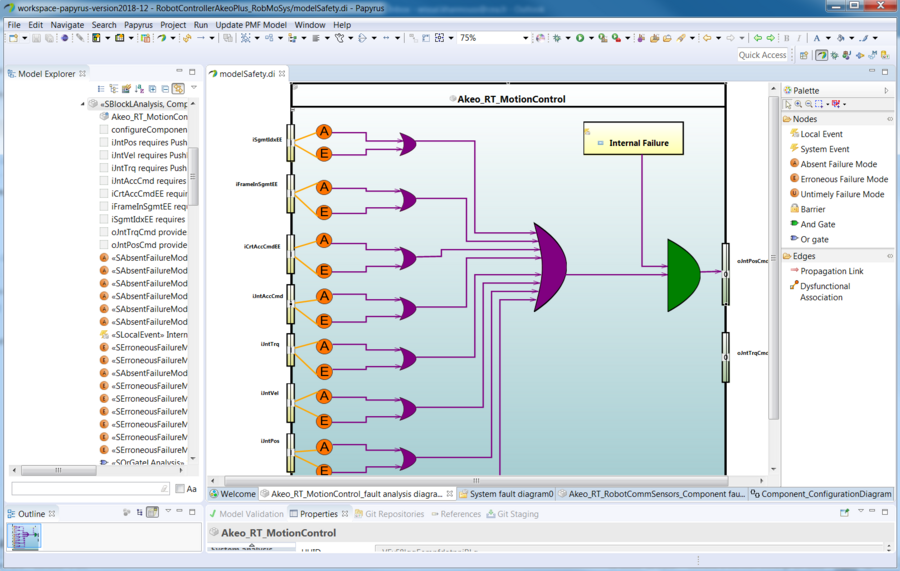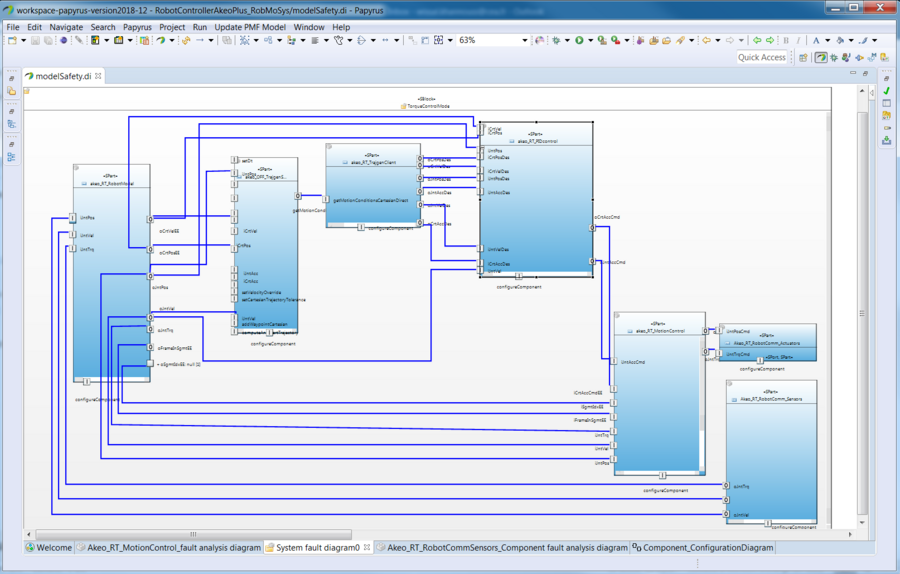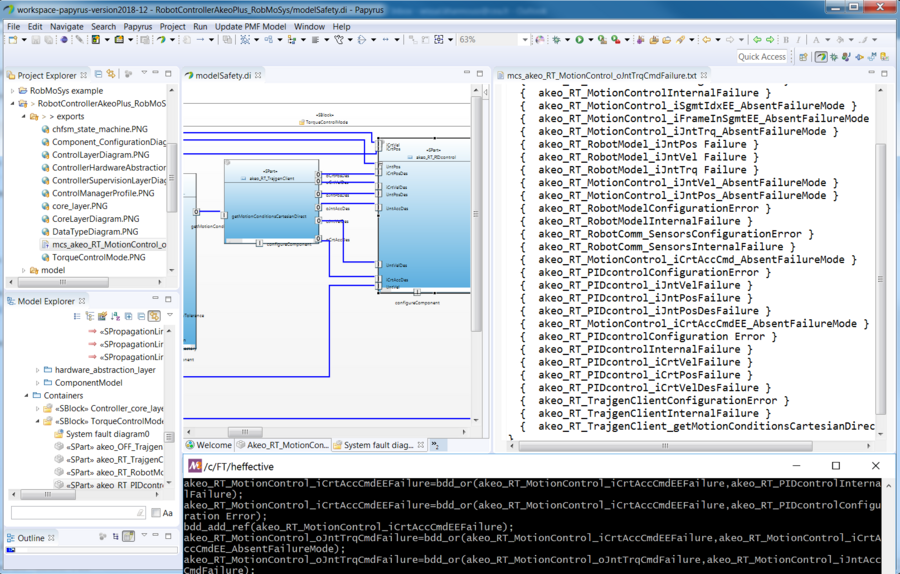Notice: this Wiki will be going read only early in 2024 and edits will no longer be possible. Please see: https://gitlab.eclipse.org/eclipsefdn/helpdesk/-/wikis/Wiki-shutdown-plan for the plan.
Papyrus/customizations/robotics/fta
Fault tree analysis
A fault tree is a top down and deductive method that represents graphically and logically the combination of events and the paths leading to the occurrence of an undesired event or state. To perform FTA on RobMoSys system models, each component is annotated with local safety analysis information. Failure modes are associated to the ports, component’s internal failures are defined and fault propagation is then done by combining logic gates (AND, OR) and propagation links.
After components fault annotation and fault propagation in the system, a top event is selected for fault tree generation and analysis. Fault trees are generated in openpsa standard format.
Whereas the previous screenshot shows the fault-propagation analysis on the component level, the following shows fault propagation on the system level.
Fault tree analysis is performed using the tool HEffective (Heterogeneous Effects Inferences and Verification). HEffectIVE is developed by CEA and proposes efficient BDD-based minimal cut-set (MCS) computation algorithms in which faults are not limited to boolean variables, they can be expressed by constraints coming from an arbitrary decidable theory. HEffectIVE can analyse Fault Trees in textual terms in the OpenPSA format.
The computed minimal cut-set returned by HEffective for the running case study (include non-bolean faults) are shown in the following screen-shot.



